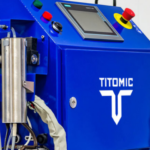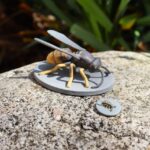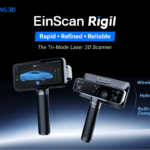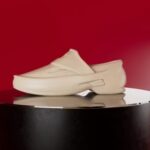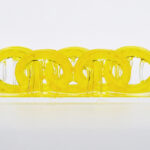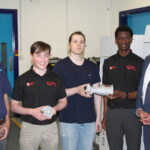New research into bio-printing of bone and skin tissues is having quite the year. The new applications are showcasing immense growth, particularly for orthopaedic, functional bioinks. Professor Jos Malda is dealing with 3D bioprinting in the lab in the University Medical Center Utrecht in the Netherlands. He and his team believe they may cracked the code for fixing arthritis and other bone diseases.
With new bioinks, the researchers are working towards a procedure for implantation of living joints. They are also looking to produce future bioinks that make entirely new cartilage and aid the body in recovery. Potentially, the technology enables the printing of new cartilage when needed using patients’ own cells as the template. As a result, medical experts could replace damaged parts with a growing, living tissue that can mix into the body. This could apply to gaps in bones and cartilage that can become part of the body and recuperate with it.
Prof. Malda and his team are experimenting with additive materials, which can make the hydrogels strong enough to act as replacement cartilage. The team are using melt electro-writing to do this. The method uses an electrical field to process polycaprolactone (a form of polyester), creating fibres as thin as a hair. These micro-fibers then serve as the scaffolds for the bioink. This significantly boosts the strength of the structures giving them more biocompatibility.
Bioinks for Healing Joints
Joint disease functions by breaking lower the rubbery cartilage tissue present in joints, resulting in discomfort, stiffness and swelling. While stem cell printing has existed for quite some time, growing tissue is another deal entirely. Stem cells alone cannot replicate the crucial functions our bodies need.
‘Printing is not the last step in biofabrication, since printing something in the shape of a heart does not make it a heart,’ said Prof. Malda. ‘The printed construct needs time and the correct chemical and biophysical cues to mature into a functional tissue.’
One of the current hurdles is that of differentiating the cells enough to suit each joint in the body. Cells can vary wildly depending on which precise joint needs recovery. As a result, the cell replication can also vary.
3D Printing is providing tonnes of new tools to the medical community. From models to prosthetics to new equipment, additive manufacturing appears to growing in terms of functions. Particularly in the past two years, there has been a boom in medical applications. Hopefully, it continues to make the lives of medical professionals, and their patients, easier.
Featured image is a public domain picture and not associated with the work of the research team.





